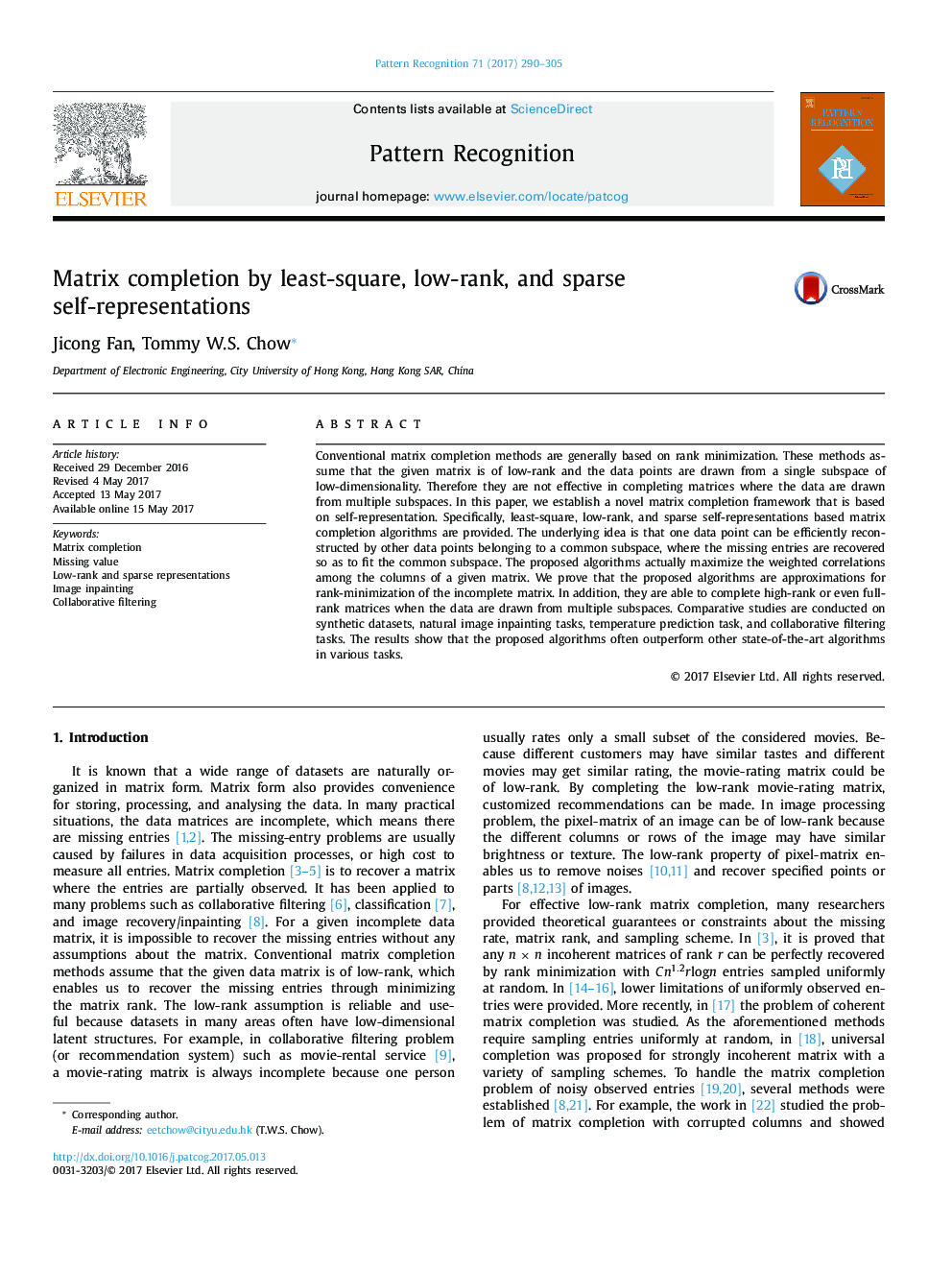| Article ID | Journal | Published Year | Pages | File Type |
|---|---|---|---|---|
| 4969555 | Pattern Recognition | 2017 | 16 Pages |
Abstract
Conventional matrix completion methods are generally based on rank minimization. These methods assume that the given matrix is of low-rank and the data points are drawn from a single subspace of low-dimensionality. Therefore they are not effective in completing matrices where the data are drawn from multiple subspaces. In this paper, we establish a novel matrix completion framework that is based on self-representation. Specifically, least-square, low-rank, and sparse self-representations based matrix completion algorithms are provided. The underlying idea is that one data point can be efficiently reconstructed by other data points belonging to a common subspace, where the missing entries are recovered so as to fit the common subspace. The proposed algorithms actually maximize the weighted correlations among the columns of a given matrix. We prove that the proposed algorithms are approximations for rank-minimization of the incomplete matrix. In addition, they are able to complete high-rank or even full-rank matrices when the data are drawn from multiple subspaces. Comparative studies are conducted on synthetic datasets, natural image inpainting tasks, temperature prediction task, and collaborative filtering tasks. The results show that the proposed algorithms often outperform other state-of-the-art algorithms in various tasks.
Related Topics
Physical Sciences and Engineering
Computer Science
Computer Vision and Pattern Recognition
Authors
Jicong Fan, Tommy W.S. Chow,
